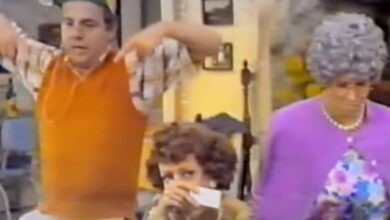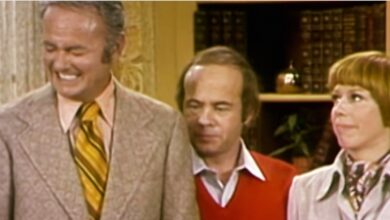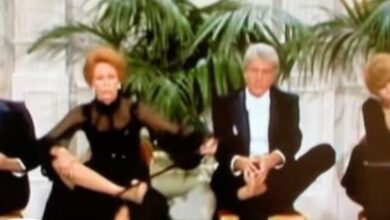Tammy Wynette’s ‘Stand by Your Man’ Defines Country Music’s Emotional Core and Sparks Cultural Debate in 1968
Released in September 1968, Tammy Wynette’s “Stand by Your Man” quickly became one of the most influential and controversial country songs of its era. Co-written by Wynette and producer Billy Sherrill, the track soared to No. 1 on the Billboard Country chart and became her signature hit, solidifying her status as the “First Lady of Country Music.” With its blend of vulnerability and strength, the song captured the complexity of romantic devotion and sparked widespread conversation across genres and generations.
Tammy Wynette was born Virginia Wynette Pugh in rural Mississippi and raised in modest surroundings. Before her rise to stardom, she worked as a hairdresser and endured a string of personal hardships, experiences that later lent authenticity to her emotionally raw music. Wynette’s breakthrough came after moving to Nashville, where her distinct blend of tear-soaked vulnerability and resolute strength set her apart in a male-dominated industry. By the time she released “Stand by Your Man,” she had already scored hits like “D-I-V-O-R-C-E” and “I Don’t Wanna Play House,” but this song would eclipse them all.
The inspiration for “Stand by Your Man” came during a brief writing session with Billy Sherrill. Legend has it that the entire song came together in just 15 minutes, a spontaneous expression of Wynette’s own complex views on love and marriage. Though she would later admit she didn’t fully grasp the political implications the song would carry, Wynette knew instantly that it was special. Drawing from her own life—marked by multiple marriages, heartbreaks, and reconciliations—she gave voice to the idea of staying loyal in love, even when it’s difficult.
The recording session took place in Columbia Studio B in Nashville, and Sherrill’s production was as sweeping as the message. Featuring strings, steel guitar, and Wynette’s unmistakable emotional delivery, the track struck a balance between classic country instrumentation and the lush, countrypolitan sound Sherrill was pioneering. Wynette’s voice, soft and wavering one moment, soaring with conviction the next, delivered the lyrics with sincerity and gravitas that couldn’t be ignored.
“Stand by Your Man” topped the country charts and reached No. 19 on the Billboard Hot 100, an impressive crossover achievement for a country song in 1968. It also went on to top charts in the UK and earned Wynette a Grammy for Best Female Country Vocal Performance. More than a hit, the song became a cultural lightning rod, celebrated by some as an anthem of romantic loyalty and derided by others as a symbol of outdated gender roles.
The song’s release coincided with a time of sweeping cultural change in America. The feminist movement was gaining momentum, and many critics took issue with the song’s perceived message that women should endure mistreatment in silence. Yet others saw it differently—as a powerful and honest expression of emotional endurance. Whether praised or criticized, the song forced a national conversation about love, loyalty, and the role of women, both in relationships and in society.
For Wynette, “Stand by Your Man” became a career-defining moment. The success of the song brought her widespread fame, leading to headlining tours, television appearances, and global recognition. It also set the tone for much of her subsequent work, as she continued to explore the complexities of female emotion with fearless vulnerability. The track positioned her not just as a star in country music, but as a cultural icon.
Beyond Wynette’s career, the song left a lasting imprint on country music. It helped define the emotional parameters of what a female country artist could express—deep personal conflict, public devotion, and quiet resilience. It also influenced a generation of female artists, from Reba McEntire to Martina McBride, who saw in Wynette a model of how to balance strength and sensitivity in their songwriting.
“Stand by Your Man” has been covered and reinterpreted countless times across decades and genres. Notable renditions include performances by legends like Dolly Parton and Lyle Lovett, and the song famously appeared in the 1992 film The Crying Game, introducing it to a new audience. Each version has brought new nuance, but none has captured the aching authenticity of Wynette’s original.
Around the time of the song’s success, Wynette’s personal life mirrored its themes. Her tumultuous relationship with fellow country star George Jones—marked by deep affection and public struggles—seemed to echo the very sentiments she had sung about. Their on-and-off love story captivated fans and added another layer of emotional realism to the song’s legacy.
More than five decades later, “Stand by Your Man” continues to resonate. It frequently appears on lists of the greatest country songs of all time and is still played on radio stations around the world. Despite changing social norms, its emotional core—the pain and dignity of standing by someone you love—remains relatable across generations.
The song also helped reshape the way producers approached country music production. Sherrill’s orchestral touch paved the way for the countrypolitan movement of the late ’60s and ’70s, expanding the genre’s commercial potential and sonic diversity. Wynette’s performance proved that deeply personal material, when delivered with honesty, could reach a wide and varied audience.
Tammy Wynette was posthumously inducted into the Country Music Hall of Fame in 1998, just a year after her death. Though her catalog is rich and varied, “Stand by Your Man” remains the definitive statement of her artistry—a song that distilled her heartbreak, her resilience, and her raw vocal power into three unforgettable minutes.
Ultimately, “Stand by Your Man” endures not because it fits neatly into one cultural category, but because it refuses to. It is a song of contradiction—strength and surrender, pride and pain—and that complexity is what keeps it alive. For Tammy Wynette, it wasn’t just a hit. It was a declaration. And for country music, it was a turning point that still echoes to this day.





